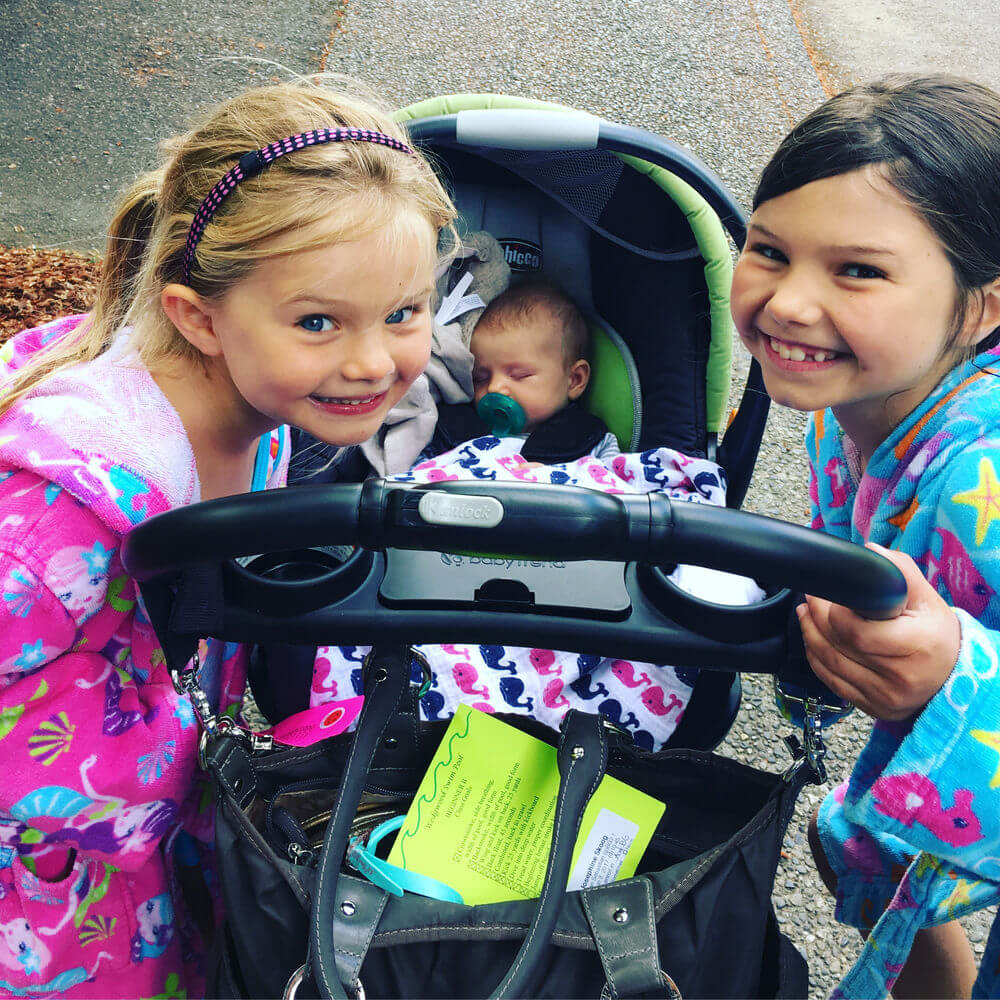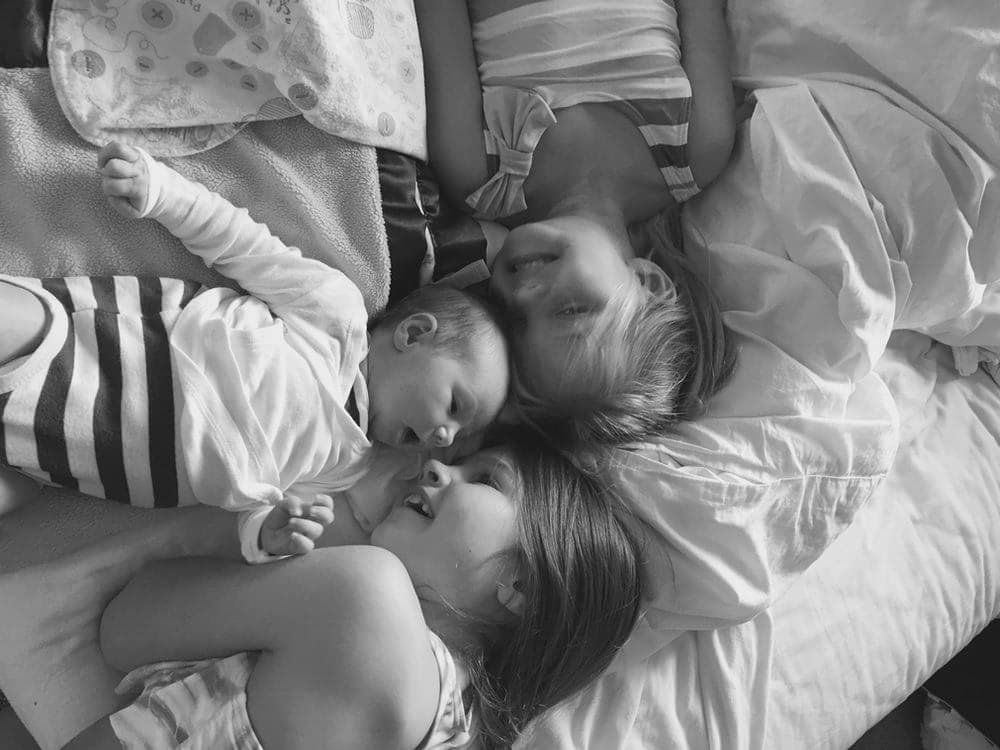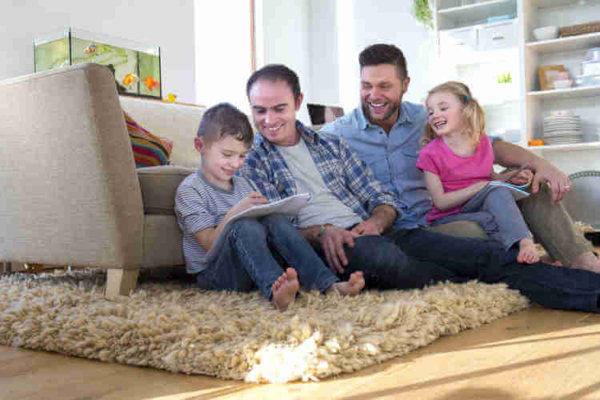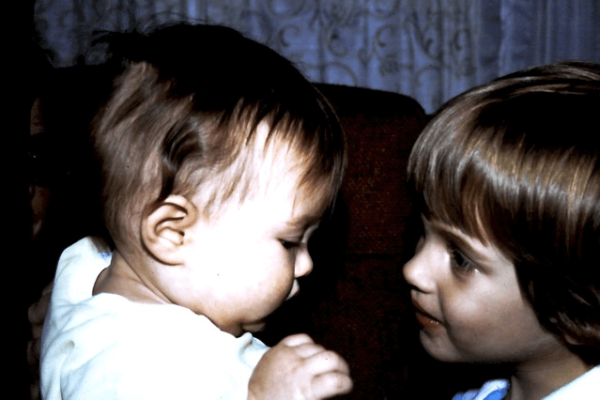Growing Big Sisters
I was preparing for three babies, really. Not triplets, although many people asked, but one baby and two big sisters (who will always be my babies). I took the big sister preparation this time with somewhat of a strategy – before baby and right after.

Before
Fortunately, I had 40 long, very long, weeks for this one. I included them in the pregnancy by being very explicit with what was happening to my body (thank you Amy Lang!) by reading books like “What’s The Big Secret?” I encouraged them to sing to the baby, which was great because I always felt so awkward doing that. They took belly pictures each week with their Polaroid camera and of course were a big part of the name brainstorm (a favorite included Clementine Sparkle). I even brought my preschooler to one of the doctor appointments, inadvertently thinking we were still in the ‘just check the baby from the outside’ stage. OOPS.
I used Mary Nelsen-Tamborski’s sweet candle story to remind them…
there will ALWAYS be abundant love for everyone in the family.
I made sure to spend extra special time with each, explaining that for awhile after the baby was born we would have to pause that time. Finally, I ran down the scenarios for postpartum so they would not be confused or scared or think I was sick when I was spending so much time in bed with the baby or if they saw blood in the bathroom. Knowledge is power, and I have learned over the years the less we tell our children, the more they make up their own answers.
We talked ad nauseam about what to expect from babies in the beginning, and especially how fragile they are and why we wash our hands, and hold their heads carefully and keep our bodies calm around them. We set goals, with the understanding that we were all going to be growing when this baby came and all needing to pitch in. Goals for my preschooler like taking a shower, practicing piano, and yes, wiping her bum, all by herself. Goals for my 8 year old like making eggs and changing a diaper. She says the best thing we did was telling her “right away” so she had time to prepare.
After
This window was critical, I knew, especially the first 48 hours. This is when routines start to dissolve, your hours start to blur, and you turn on the auto pilot. We immediately had to regather to tighten up the routines and change them a bit, logistically to work around the baby and amount of adult hands, and also so that we could reconnect with the older girls. They gather information quickly and immediately turn them into decisions that lead to behavior:
“In order to be important I need to _________.”
My 8-year-old saw that it was important to take care of the baby, so she became mini mom and immersed herself in the caretaking.
For this I relinquished control and taught her how to hold the baby without the pillow, how to change a diaper, and how to soothe her when she was crying with the special bounce.
She was all up in the breastfeeding and pumping, reminding me which side to start with and helping diagnose when feedings got stressful and the baby finally needed a frenulum cut. “Mama, just looking at her face relaxes me,” she confided. I realized then she was OUR baby. All of ours.

My preschooler saw that in order to be important she needed to be physically close to us. For this, I kicked my multitasking into high gear. We read books together to the baby, watched movies together while breastfeeding, and played games while baby was napping. With the power of perspective on my side, I knew it wouldn’t last, but that in the beginning was important to indulge. It helped that my husband could take this on too, creating his own special bonds and time together. Play was imperative, sleep deprived or not. I looked in her eyes, listened when we had the time to connect, and created special jobs like giving the baby her vitamin D drops and pushing the buttons on the pump. After a couple weeks she didn’t need this as much anymore, and I was able to get more rest and lean on the established routine. Investing energy in that quality time right from the start led to long term benefits.
As the weeks went by we all reflected on the goals and continued to encourage everyone’s best self. We used the family meeting right from the start (when the baby was 4 days old), giving even the baby compliments and, when it was her “turn”, telling her what we would like to be complimented on. We leaned on these family meetings to build our charter, review routines, and solve problems which, with added stress, creates many. On a particularly hard week, when I was feeling depleted and steeped in baby blues, it was the family meeting that helped relight the flame. Receiving compliments from the family acknowledging all I was doing filled my heart.
The baby? Yes, we prepared for her too, but fortunately we have Target and Amazon Prime to thank for that.
How to Grow A Big Sibling:
- Prepare: share developmentally appropriate details, read books, include in the pregnancy, set routines. If moving the sibling to a new room or bed, do this several months before the baby comes home.
- Find ways for them to help: create special jobs, set goals, and give more responsibility.
- Find ways to connect: use small windows of time to play a game, and listen to their words intently.
- Family meetings!





Comments